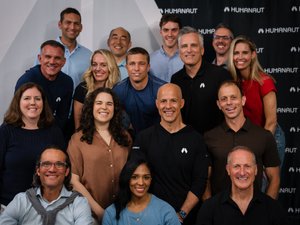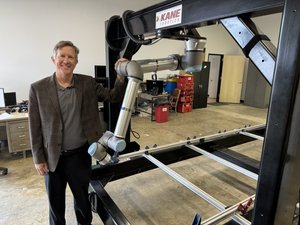
When Austin Ventures announced it wouldn't open another fund for early-stage investments in February, it was met with a collective gasp by Austinites who weren't already embedded in the world of startups and capital. Even though Austin Ventures' role had been shrinking for years as other venture capital firms were growing, AV was still one of the most visible and well-known VC groups in Austin -- and it had a national reputation, to boot.
Formed in the late 1970s, before many of today’s entrepreneurs had touched a keyboard, Austin Ventures watered the seeds of dozens of companies seeking Series A and B funding. It fueled Austin’s most promising startups, and helped boost the city’s image as a promising home for innovative businesses and startups.
AV’s early-stage portfolio includes RetailMeNot, Silvercar and Civitas Learning. And its middle-market is rich with companies such as HomeAway, Grande Communications and Silicon Laboratories. All told, AV invested $3 billion into 280 Texas-based companies.
Most recently, it closed a $900 million fund in 2008. It managed only 11 deals with local companies in 2014. Even though it was slowing down, it still had a big impact: Those deals kept AV at the top of the heap in local VC funding. But it wasn’t the venti-sized cash machine it had been years prior.
Austin Ventures’ shift from startup funding to growth-equity deals had plenty of precursors and, meanwhile, new players had emerged.
Venu Shamapant, co-founder and general partner at LiveOak Venture Partners, was a general partner at Austin Ventures for 11 years before creating a new firm in 2012. He co-founded LiveOak with former AV partners Krishna Srinivasan and Ben Scott.
Shamapant said Austin Ventures was slowing down its investments, and that minimized the impact of its departure on the startup ecosystem. But he said it still has left a void because of how well known and trusted it was -- and all the out-of-state money Austin Ventures attracted when it made investments. AV generated credibility with its investments, so when it jumped on board with an Austin startup, others typically followed.
“It makes a significant difference to those investors if there’s a local investor who they’ve worked with in the past and they’ve made money with in the past,” he said.
Now, no one firm is the rainmaker.
Jason Seats, a partner in Techstars' $150 million venture capital fund, said that may take a while as smaller VC firms build a track record that attracts more institutional investments.
Seats said we often talk about the business world as an ecosystem and that it's a good metaphor to apply for Austin Ventures' departure.
“If you lose a larger predator, there’s a gap in the food chain," he said. "But it fills in pretty quickly. Ecosystems are self-balancing. It’s a part of nature.”
That leads to a new stasis, and Seats said Austin seems to be on the right path.
“We’re at least planting the seeds," he said. "We may not have enough water and food and sunlight to feed all those plants as they grow. But that’s a problem we can develop around as we go.
"Even though AV was a huge amount of capital, it was so monolithic that I think it’s a healthier dynamic to have that same amount of capital distributed among 10 venture funds that are making independent decisions and competing against each other for deals.”
Bart Bohn, a partner at Austin Technology Incubator, said Austin often produces promising companies that tend to take earlier exits because of how difficult it is to attract large funding rounds in Austin.
"There's a void (since AV wound down) in the sense that West and East Coast investors used to watch AV's early stage portfolio and gauge when a company may be ready for a B round. Without that spot to look for, those firms have to do more work to engage in the community."
And those early exits have a long-term impact because it means fewer experienced founders with hundreds of millions of dollars to re-invest in the local scene.
"It's completely rational from the founders' standpoint," Bohn said. "Maybe only take in relatively small amounts of money compared to the big venture capital, and you're going to put many millions of dollars in your personal bank account. Or you can let it all ride and take a really big check and go for it -- if you can get that big check."
Sometimes, you don't need the big check. The fundamentals of the startup ecosystem have changed.
“Austin entrepreneurs have gotten a lot more creative than they used to be by virtue of the requirements of the market,” Shamapant said. “People are getting a lot farther in developing a product and developing a market before they raise capital.”
Looking back through history, Austin saw powerful growth in the late 1990s and early 2000s. By 2010, the city had experienced significant shrinkage in early-stage capital, making it tough for companies to land funding.
“The pendulum swung from one end of the spectrum to the other end of the spectrum,” he said. “Now it’s returning to its mean.”
Shamapant said Austin still has a mismatch between supply of capital and demand for early-stage capital. If Austin produces more big name companies that capture the nation’s attention, the mismatch could be fixed.
“Nothing breeds success like success,” he said.
(Photo via Flickr by Ed Schipul. CC by 2.0)








